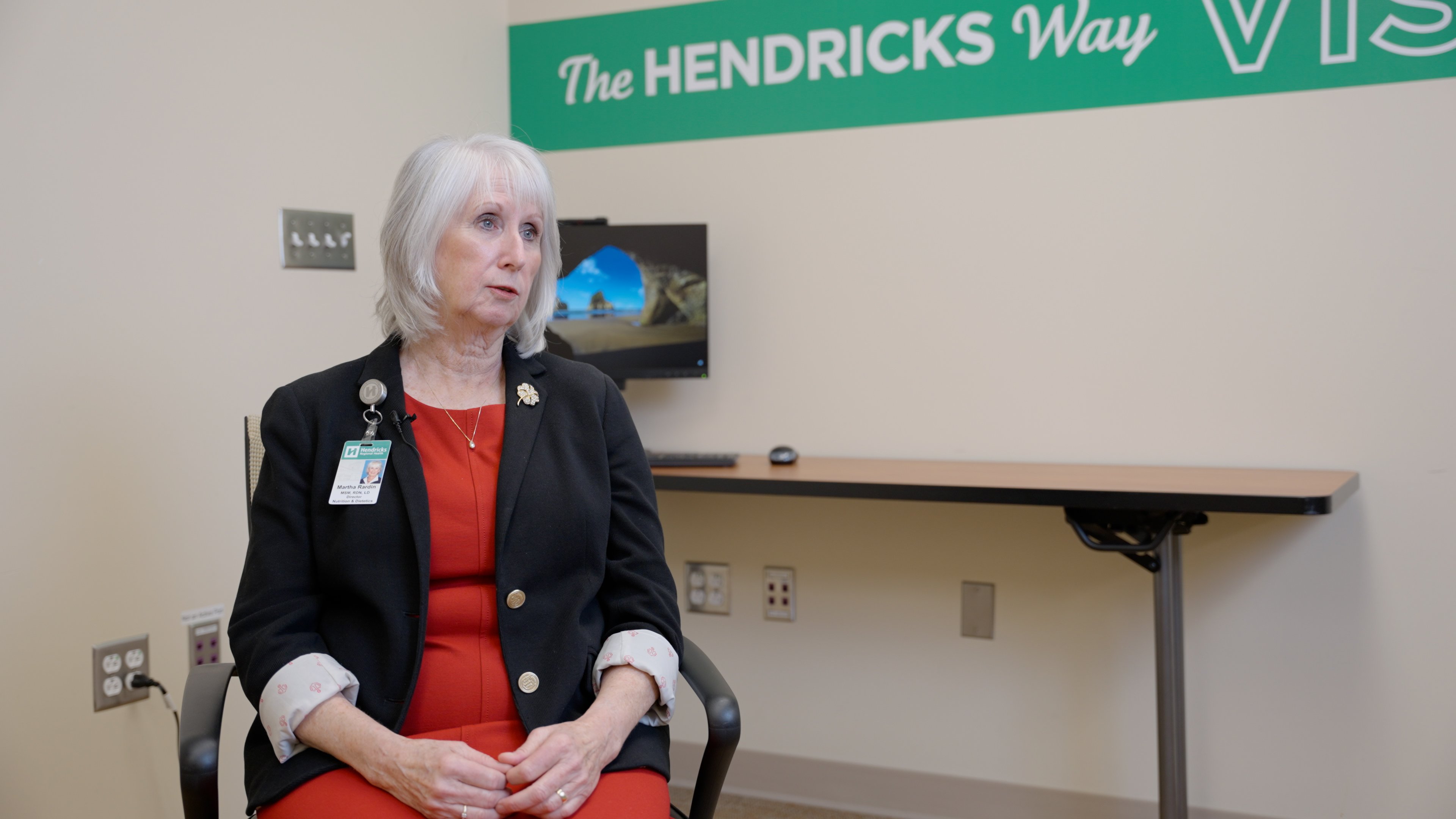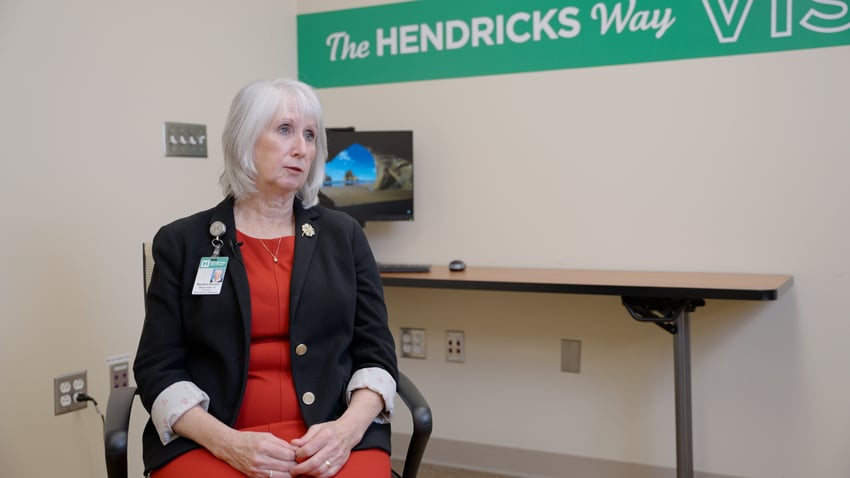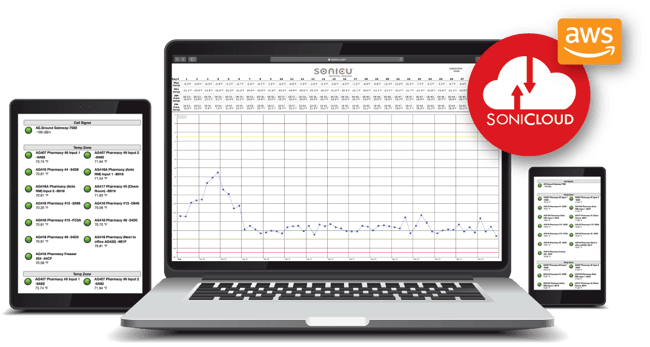Room Pressure Monitors
If you’re looking for a room pressure monitors that helps your team eliminate manual logging, improve compliance readiness and protect all your sensitive assets, you’ve arrived at the right place.

Let us help you evaluate your needs!
- Safety: Alerts to protect asset
- Compliance: Automated reports
- Efficiency: Reduced Manual Logging
And what makes us different?
- Lifetime Warranty: Never buy hardware again!
- Unlimited Users: Scale across your entire org
- Connectivity Flexibility: Wi-Fi, Cellular or Data Hub
- Phone call alarms: Alerts won't get ignored
- Mobile App: 500 Freezers in your pocket
All American made and supported!

See What Customers Say About Sonicu
Asset Protection. Compliance Automation. And Reduced Manual Processes.
Sonicu serves thousands of professionals at hundreds of organizations across North America by improving how they monitor and manage their most sensitive assets and environments.
Professionals from healthcare, life science, laboratory and cold chain facility management turn to Sonicu to help them improve the way they do business.
- Operational Efficiency: Virtually eliminate the need for tedious and costly manual logging
- Compliance Automation: Respond to virtually any regulatory audit or inspection in a few clicks with our reports section
- Asset Protection: Detect and respond to any temperature excursion that can threaten virtually anything perishable: food, drugs, vaccines, research, etc.
When you combine these three significant feature benefits, our clients average about $80,000 of savings for every 100 hospital beds.
At research or university locations without beds, it’s not hard to imagine the time savings alone by simply not having staff manually record temperatures several times per day.
Our customers stay with us thanks to our American-based customer support which is never more than a phone call away. While our technology is intuitive and powerful, we know it’s only as strong as the customer-focused professionals who stand behind it.

Room Air Pressure Monitors
Room air pressure differential monitors to allow users to monitor the room pressure without being physically present in the room.
Healthcare facilities often use this technology, as these monitors help maintain optimal conditions to ensure the safety and quality of sensitive equipment and medications.
Pressure monitors measure room pressure in atm, or standard atmosphere, defined as 101325 Pa. This unit of measurement stands for pascal and is used to measure internal pressure and stress, among other things.
Users can check this pressure on-site or through remote monitoring technology on their smart devices.
That way, if any dangerous changes in room pressure occur, they can quickly make adjustments remotely or return to the facility if necessary.
Some buildings, such as medical facilities that house sensitive items, require tools that provide in-depth monitoring and reporting.
For facilities that store less pressure-sensitive equipment, a basic monitoring tool may suffice.
There is no one-size-fits-all solution when it comes to pressure monitoring, so you should consider your specific business needs when making a decision.
Sonicu’s room pressure monitoring technology is designed to improve facility safety and streamline regulatory compliance.
Leveraged by hospitals, pharmaceutical companies, and data centers, Sonicu documents differentials in room air pressure, as well as humidity and ambient temperature.
This ensures that optimal conditions are maintained around the clock.
Manual monitoring and logging can be incredibly time-consuming, and it can be easy to overlook critical changes in pressure.
Sonicu helps take the frustration out of monitoring these conditions by hand, automating the process and keeping users up to date 24/7.

Hospital Room Pressure Monitor
Hospital room pressure monitor technology allows hospitals to monitor conditions in rooms that house sensitive materials.
There are many pressure monitors to consider that are tremendously helpful for those looking to monitor hospital isolation room pressure.
All of these can be used to improve your monitoring capabilities and make sure that your desired room pressure is maintained, even when you’re working remotely.
With all the different brands on the market today, choosing the most appropriate pressure monitor for your facility can be challenging. However, by making a checklist or outlining your most pressing needs, you can compare brands more easily, seeing what each brings to the table and how they can help with your monitoring needs.
Hospitals should take particular care to thoroughly research the technology that’s available today, as they are often responsible for storing extremely sensitive equipment and medications that respond to even the slightest changes in pressure.
Taking the time to find the monitor that’s right for your facility is key to ensuring safety and efficiency.
However, by making a checklist or outlining your most pressing needs, you can compare brands more easily, seeing what each brings to the table and how they can help with your monitoring needs.
Hospitals should take particular care to thoroughly research the technology that’s available today, as they are often responsible for storing extremely sensitive equipment and medications that respond to even the slightest changes in pressure.
Taking the time to find the monitor that’s right for your facility is key to ensuring safety and efficiency.
Surface Mount Pressure Sensor
A surface-mount pressure sensor is placed on a hard surface to monitor room pressure.
One of the great things about using a surface mount room pressure sensor is that once it’s installed, you don’t have to do much else with it.
You can keep it in the same place and it will carry out required functions regardless of whether you’re in the room constantly moving it around or not.
This proves convenient for those that frequently work remotely or who are otherwise unable to rearrange items in their facilities often.
Installation service providers install these sensors. They can be extremely helpful to facilities that lack the experience to get sensors up and to run on their own.
As mentioned previously, once surface sensors are installed, you’re pretty much good to go—there’s no need to be moving them to different areas of the facility.
This makes it easy for users to locate sensors when they need them.
That being said, when mounting a sensor, it’s essential to choose a location that’s ideal for pressure monitoring and where your equipment isn’t likely to become lost or broken.

Portable Room Pressure Monitor
A portable room pressure monitor, unlike mounted or fixed monitors, can be easily moved around as needed.
Monitors like these are ideal for facilities that frequently rotate rooms for storage. For example, there may be some items that you need to monitor on the first floor one week and some equipment that needs monitoring on the top floor the next.
Room pressure monitor mobile technology grants users the flexibility to adjust items as necessary to monitor the right equipment and measure room pressure in multiple locations.
If you’re looking for a room pressure monitor, you should consider your specific needs.
What kind of equipment are you responsible for monitoring?
How often do you anticipate needing to move that equipment from one room to another?
Asking yourself these questions can be an effective way to determine which type of room pressure technology is right for your organization.
In some cases, it may require some trial and error to find the perfect match, but it’s important to carefully weigh all of your options in order to find the technology that’s best suited to protect your assets.
This can save you a lot of trouble down the road.
And they don’t offer the opportunity to alert building managers about the problem, negating the opportunity to resolve issues before they become chronic.
Facilities that store sensitive equipment require more extensive reporting.
Sonicu offers complete reporting and compliance, allowing users to analyze data in depth and create custom reports.
This can make for more accurate measurements and enable you to make quick changes as needed.
Some facilities may require slightly different setups, so it’s important to consider your room structure and whether or not an indicator would actually provide you with accurate information.
It can’t hurt to try, but if your device fails to offer critical data on room pressure, it may be time to look for a different type of monitor, like a cloud-based system with a powerful and intuitive mobile app.
Room Pressure Monitor Manual
Viewing a room pressure monitor manual prior to installing any type of monitor can be highly beneficial.
It’s much easier to install monitors the right way the first time than to install them incorrectly and go through the whole process—or, even worse, have to call up a professional—again.
A room pressure monitor installation manual will likely be included with whatever monitor you purchase, so you should take advantage of these instructions to ensure that everything gets up and running with ease.
You should also be sure to use a pressure sensor datasheet to keep track of changes in room pressure and identify trends over time.
Most pressure monitors include some type of reporting feature.
It can be difficult to spot issues if you’re only looking at data in a silo, which is why it’s important to centralize and consolidate data to the greatest extent possible.
Solutions like Sonicu make it easy for users to access the information they need without having to jump through a bunch of hoops to obtain critical data.
Decreasing manual logging and staying abreast of air pressure differential challenges can play an essential role in preventing hospital-acquired infections.
You can also keep up to speed with compliance and ensure that your facility is meeting required safety standards.
Using manuals and spreadsheets, you can get the most out of your monitoring technology and increase the efficiency of your workflows.
You can learn more about how our software helps compliance professionals in these case studies:
Problem: Dining department struck with regulatory violations
Solution: Enterprise-wide monitoring that automates regulatory compliance across all departments
Problem: Release of lead particles in battery projects
Solution: Mobile, affordable air pressure monitoring solution
Problem: Burdensome, labor-intensive legacy temperature monitoring
Solution: Remote, wireless autonomous monitoring to drive down manual processes

We realized there had to be a better way and went in search of technology that could give us that level of monitoring that would keep our patients safe. Sonicu made it easy and we grew across the entire hospital.

American-based Customer Support: Robust & Reliable High Touch Service
Software and technology is only as good as the people who stand behind it.
At Sonicu, that means our team of American-based customer success managers who are never more than a phone call away to help field and fix any service issues.
Our probes and sensors are placed in demanding frozen environments and our software literally sends billions bits of data monthly, meaning there’s alway the potential for a hiccup on either the hardware or software.
We are committed to fielding every customer service request promptly and addressing our customer’s concerns promptly and professionally.

 “I like to say that every refrigerator or freezer is like a car in that they all behave a bit differently,
“I like to say that every refrigerator or freezer is like a car in that they all behave a bit differently,
and then every now and then you just get a bad boy who doesn’t want to perform as we need it to,”
Martha Rardin, Director, Nutrition and Dietetics, Hendricks Regional Hospital.
 “Sonicu has been a powerful tool to identify which units are behaving out of spec and get our team
“Sonicu has been a powerful tool to identify which units are behaving out of spec and get our team
to fix them before we have a serious issue.”
Tim Livesay, Director, Hancock Regional Hospital Pharmacy Director













Before Sonicu, we had to don bunny suits to check the status of our cleanrooms. Now we check our phones and know right away. The system saves us time and effort and helps us respond to environmental